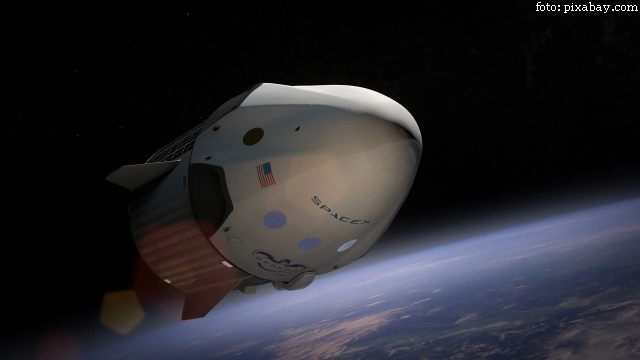Space X and the future of mankind in space
Over the past few decades, mankind has witnessed a revolution in terms of space exploration

Corina Cristea, 15.12.2023, 14:00
Over the past few decades, mankind has witnessed a revolution in terms of space exploration, with two names virtually taking the spotlight: the private spacecraft producer and service provider SpaceX, and NASAs Artemis programme. Aiming to reach the Moon and Mars, these entities open new horizons and pave the way for a future space colonisation.
Founded in 2002 by Elon Musk, SpaceX has grown into a key player in spacecraft launches; it has managed to streamline processes and reduce the costs entailed by such missions, among other things by means of creating reusable rockets.
The plans of SpaceX to produce a heavy-lift launch vehicle date back to 2005. The development of methane engines (later on named Raptor) began in 2012, and the plan to build a launch vehicle was first announced publicly in 2016.
Dubbed Starship, the 119-m high, 5,000-tonne vehicle is the tallest and most powerful super heavy-lift launch vehicle ever built, and the first one designed to be fully reusable. It has two components: a booster called Super Heavy, which sends the vehicle into space, and the upper stage, which operates as an autonomous spacecraft to carry the crew and cargo.
Starships first orbital flight test took place on April 20, 2023, but the vehicle was destroyed after it entered an uncontrolled spin before stage separation. The second test was quite recently, on November 18, and in spite of the successful stage separation, the Super Heavy booster exploded just seconds after. The upper stage was also lost nearly 8 minutes after launch, during which time the vehicle did manage a 148-km lift.
Our guest today, researcher Claudiu Tănăselia, explains: “I like to call it a successful test, but a failed launch. The launch was failed because the vehicle did not reach orbital speed, did not go around the Earth and reach above Hawaii, as planned for both tests, so in this respect we may call it a failure. But this is not necessarily a bad thing, in the SpaceX philosophy. It was a successful test because it lasted more than the previous one. Not only did the rocket fly longer, but they also managed to test a number of flight elements, such as the hot staging, all the 33 Raptor engines were fired full duration, which already means that the Raptor engine quality was improved compared to the first test in April. Having 33 engines up and running for nearly 8 minutes is a big deal. True enough, the booster exploded after separation, the upper stage also went off, and questions still remain. But they are not so big as the issues with the April test, when the orbital launch mount was also destroyed, when several engines failed probably because of the shockwaves occurring during the launch, the vehicle lacked that water deluge system which was introduced in the second test, so things improved. This is why we may call this test a success, even though the launch was failed.”
We should also take into account, Claudiu Tănăselia says, that it has actually reached outer space, it went over 100 km, and although it failed to reach the orbit, it has gone farther than any test of the Soviet N-1 rocket of the 1960s-1970s, when the Soviets were trying to catch up with the US in the Space race, which means that soon we might have an orbital launch as well: “Now, the problem that I see and the thing that worries me a little is the pace within the Artemis program, even if the pace at Space X is sustained and they are working intensively and allocating human and financial resources that are common in this industry, and we are talking of a cutting edge industry not just any kind of industry. I mean, how late or how early we get to the moon, because the Artemis program depends on Starship. And Starship still hasnt reached orbit with all the efforts of Space X. Starship has to go into orbit a few times to refuel a spaceship that it should send to the moons orbit, from there to land the astronauts on the moon, and NASAs plan is for this to happen by 2025. And 2025 is less than two years away. I dont know how SpaceX will be able in these two years to recover all these stages and end up contributing to the landing of the Artemis 3 program. We will probably see a delay of the landing on the moon in 2025, which will be pushed to 2030, thats my estimate considering the pace of development not only of the Starship rocket, but also of the astronaut suits that need to be prepared by other private companies, etc.”
He believes that landing on the moon will occur around 2030, it remains to be seen, says the researcher, if it will be the Americans or the Chinese who can do that, because China is also preparing for landing on the moon in that period as well. The plan is to go to the moon and stay there, meaning we dont go plant a flag and come back: we go to the moon, build bases, use lunar regolith as raw material for future 3D printers to build shelters on the moon, lunar bases, and maybe we will learn to live in lunar caves, protect ourselves from cosmic radiation, and from the Moon we will go to Mars, says the researcher, who does not believe that this will happen earlier than 2040-2050. (AMP, LS)






























